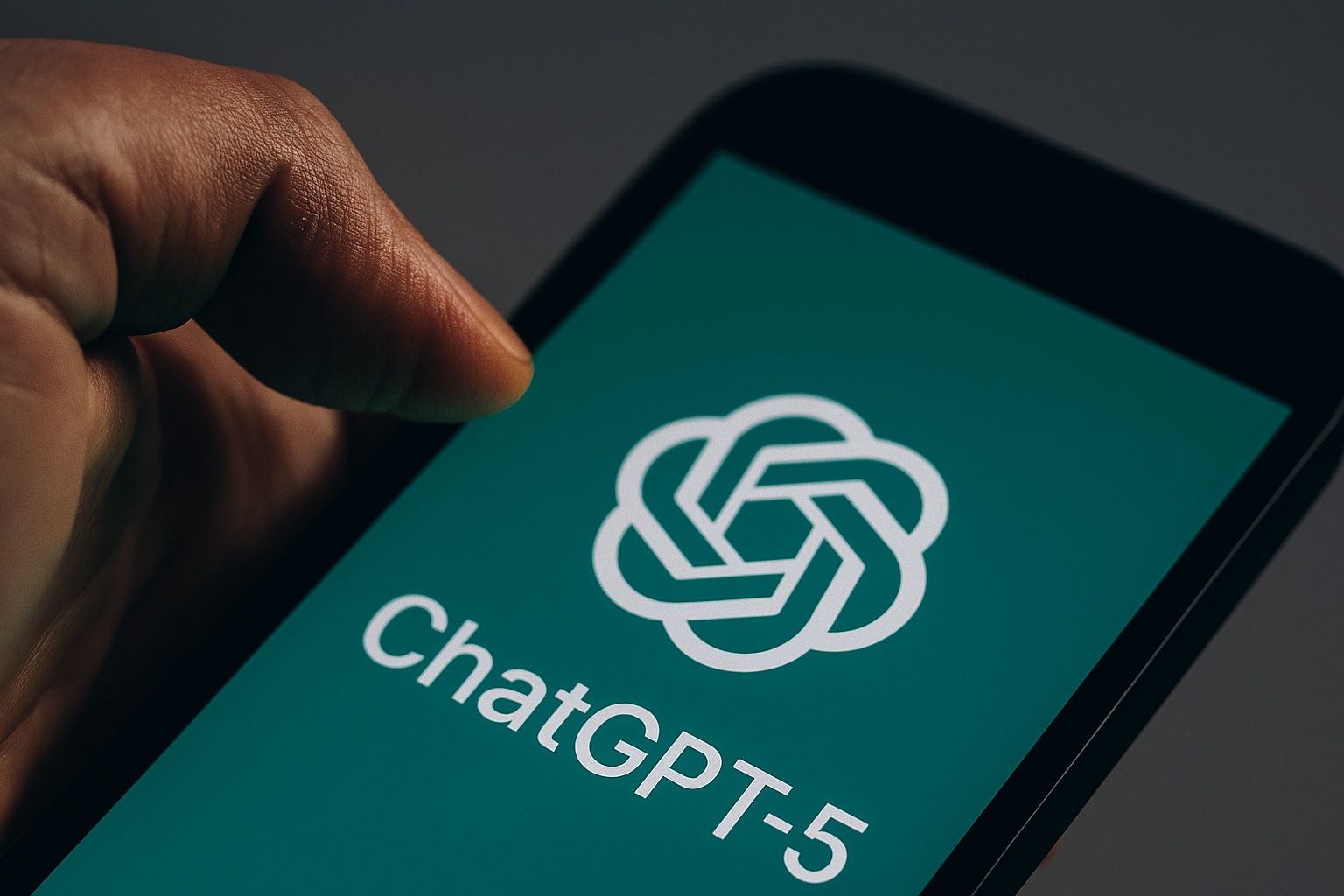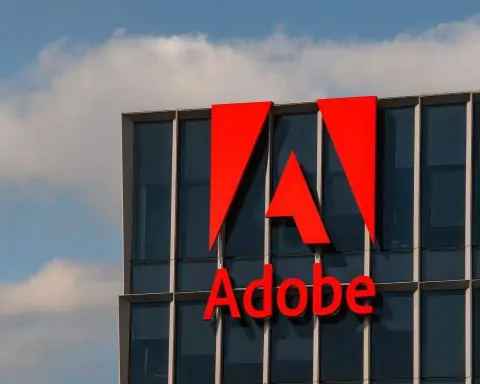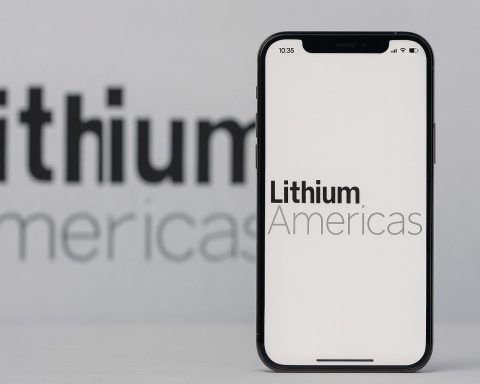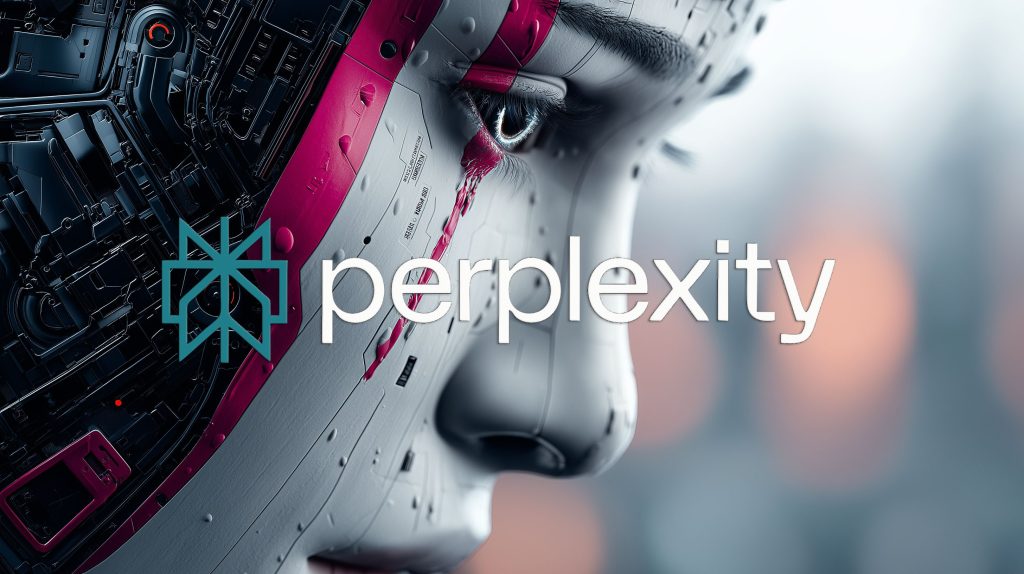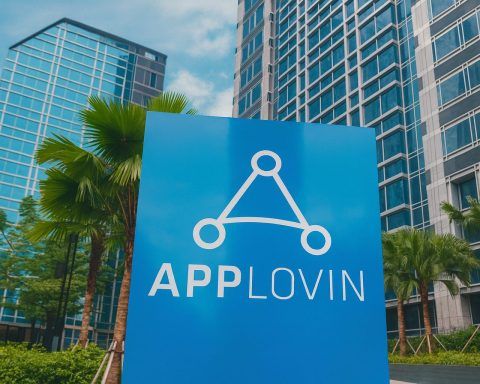- GPT-5 launched on August 7, 2025 and was rolled out to all ChatGPT users, including the free tier.
- OpenAI CEO Sam Altman described GPT-5 as “clearly generally intelligent” and a “PhD-level” expert, a step toward AGI but not AGI yet.
- GPT-5 features “Think Harder” mode with test-time compute that automatically allocates more processing power for hard questions.
- GPT-5 provides a 400,000-token context window, vastly larger than GPT-4’s 32,000 tokens, enabling long documents and conversations.
- GPT-5 is billed as OpenAI’s strongest coding model, capable of generating working software end-to-end from a single prompt and even building a fully functional web app in about a minute in demos.
- Health knowledge improves: GPT-5 is the best model for health-related questions, offering more precise medical answers and the ability to explain complex medical reports with follow-up questions, while warning it’s not a doctor.
- GPT-5 remains multimodal, accepting text and images with a more capable vision system for integrated analysis.
- Safety and reliability improve: GPT-5 reduces false or misleading outputs by about 65% vs GPT-4 in internal tests and hallucinations by about 26%, while often failing gracefully when unable to solve a task.
- Agentic abilities enable GPT-5 to execute long chains of tool calls and autonomously decide when to use browsers, calculators, or APIs in service of a multi-step goal.
- Access and pricing are broad: free ChatGPT includes GPT-5, Plus costs about $20/month, Pro about $200/month with GPT-5-Pro and GPT-5-Thinking, Team and Enterprise options, plus API pricing of $1.25 per 1M input tokens and $10 per 1M output tokens, with cheaper GPT-5-mini and GPT-5-nano variants available.
Overview: OpenAI Unveils GPT-5 to the World
OpenAI has officially launched GPT-5, the highly anticipated next-generation AI model powering ChatGPT [1]. Debuting today (August 7, 2025), GPT-5 is being rolled out to all ChatGPT users – including the free tier – marking the first time a flagship OpenAI model is immediately available to everyone [2] [3]. CEO Sam Altman introduced GPT-5 as “a significant step along the path to AGI,” calling it “clearly a model that is generally intelligent” – though he noted it’s not true artificial general intelligence yet [4]. The new system is touted as OpenAI’s “smartest, fastest, most useful model yet,” a major leap that Altman likened to upgrading from a pixelated screen to Retina display clarity in terms of AI quality [5]. In essence, GPT-5 feels like talking to a “PhD-level” expert on any topic [6] [7]. This launch arrives amid sky-high expectations in the AI industry – and intense competition – as companies bet hundreds of billions on AI and look for tangible returns on that investment [8] [9].
What’s New in GPT-5? OpenAI says GPT-5 is smarter, faster, more accurate, and packed with new features that build on the successes (and lessons) of GPT-4. Headline improvements include:
- Expert-Level Answers: GPT-5 delivers more reliable, detailed answers across domains. It “thinks” more deeply before responding, resulting in fewer mistakes or made-up facts [10] [11]. OpenAI claims it’s their most accurate model yet, much less prone to hallucinating or pretending to know things [12]. In safety tests, GPT-5 produced 65% fewer false or misleading statements than the previous GPT-4 model [13]. It even attempts “safe completions” for tricky prompts – providing a cautious helpful answer within safety limits, rather than just refusing outright [14].
- “Think Harder” Mode: A key breakthrough is GPT-5’s ability to apply extra computing power on difficult problems in real time. If you ask a particularly hard question, GPT-5 will automatically allocate more processing (“test-time compute”) to think longer and solve it [15]. This means complex math, reasoning, or coding tasks that stumped earlier models are handled much better by letting GPT-5 “pause and reason” through the answer. OpenAI says this is the first time the public gets to benefit from this deeper reasoning approach [16], which dramatically improves GPT-5’s performance on challenging queries.
- Coding on Demand: GPT-5 is described as OpenAI’s “strongest coding model” yet [17] and an excellent coding collaborator. It can generate working software end-to-end from a single prompt, even producing front-end UIs and debugging code with minimal guidance [18]. In demos, GPT-5 built a fully functional web app in about a minute based solely on a natural-language request [19]. Sam Altman highlighted “software on demand” as a defining feature of the GPT-5 era – essentially, you can ask GPT-5 to create software for you instantly [20]. Early testers praise its ability to handle long, complex programming tasks and use tools autonomously during coding, acting as a capable agent that follows multi-step instructions and explains its actions [21].
- Greater Knowledge & Skills: GPT-5’s knowledge has broadened and its skill at writing and analysis has improved significantly. It excels at writing coherent, refined text – whether crafting stories, essays, or business reports – acting as an “expressive writing partner” for creators [22]. It also handles specialized queries better than before. OpenAI says “GPT-5 is really the first time it feels like you can ask a legitimate expert anything”, from science and finance to obscure trivia [23]. In fact, GPT-5 is now the company’s best model for health-related questions, providing more precise, reliable medical answers (with appropriate cautions) and serving as a proactive “thought partner” for personal health research [24] [25]. During the launch event, Altman noted health queries are a top use case, and GPT-5 demonstrated how it can explain a complex medical report in understandable terms and even ask the user sensible follow-up questions for clarity [26] [27]. (OpenAI emphasizes, of course, it’s not a doctor and real professionals should still be consulted [28].)
- Massive Context Memory: GPT-5 can remember and process far more information at once than its predecessors. It boasts a 400,000-token context window (hundreds of pages of text) and can output very lengthy answers up to 128,000 tokens [29]. For users, this means GPT-5 can ingest lengthy documents or maintain extremely long conversations without losing track of details. (By comparison, GPT-4’s max context was about 32,000 tokens.) In practical terms, GPT-5 can analyze whole books or large codebases in one go and produce a detailed response with full context. As WIRED reports, the 256k+ token capacity lets it handle long discussions, documents, or code dumps much more coherently than before [30].
- Vision and Multimodality: Like GPT-4, the new model accepts images alongside text and is even better at it. GPT-5 can analyze and discuss images in detail, demonstrating more advanced visual understanding. For example, if a user uploads a photo of a plant with a question, GPT-5 can identify inconsistencies (say, noticing the plant image is actually a cactus rather than the “snake plant” the user asked about) and give a nuanced answer [31] [32]. This multimodal ability means GPT-5 can act as an image analyst – describing images, solving visual problems, or extracting info – tightly integrated with its language skills.
- Personalized AI Experience: OpenAI is also adding user-friendly features in ChatGPT alongside GPT-5. Users (especially paid subscribers) can now customize ChatGPT’s personality and appearance – choosing a conversational tone (e.g. “Cynic,” “Robot,” “Listener,” or “Nerd”) and even a chat interface color theme [33] [34]. Voice interactions are more natural too, with a refined voice mode that sounds smoother and follows your instructions/style better [35]. There’s a new Study Mode aimed at education, where GPT-5 will guide you step-by-step to learn something rather than just spitting out an answer [36]. And coming soon, GPT-5 can connect to your personal apps: Pro users will be first to link their Gmail, Calendar, Contacts and more, letting ChatGPT pull in relevant personal info when needed (for example, summarizing your emails or scheduling events) [37] [38]. These upgrades make ChatGPT feel more like a personalized assistant that remembers context, adapts to your needs, and even manages tasks for you.
In sum, GPT-5 represents a sweeping upgrade on multiple fronts – reasoning, coding, knowledge, memory, and usability. Altman believes it “unites and exceeds” all the breakthroughs from OpenAI’s recent models (like the GPT-4 series and specialized “o-series” reasoning models), moving closer to an AI that can handle just about any task a person could [39]. The model’s release has been met with both excitement and some healthy skepticism, as the world now gets to test just how far this new AI can go.
GPT-5 vs. GPT-4: How Does It Compare?
GPT-5’s launch inevitably invites comparison to GPT-4, which came out in March 2023. GPT-4 was itself a huge leap: it could pass difficult exams (GPT-4 scored in the top 10% of the bar exam, whereas 2022’s GPT-3.5 was in the bottom 10% [40]) and introduced image understanding for the first time. OpenAI continued improving GPT-4 over time (with variants like GPT-4 “o” optimized for reasoning), but expectations for GPT-5 were sky-high after nearly two years. So how big is the jump this time?
According to OpenAI, the improvement is dramatic. Altman asserted that the step up from GPT-4 to GPT-5 is like moving from a low-resolution display to high-definition – everything is clearer and more detailed [41]. He noted GPT-5 “really feels like talking to an expert in any topic” rather than just a clever generalist [42]. Concretely, GPT-5 has a much larger knowledge base and specialized training in areas like advanced math and reasoning, combining techniques from various interim models [43]. It’s also much faster and more efficient: users are noticing snappier responses despite the heavier computation under the hood. And unlike GPT-4’s initial release (which was limited to paid subscribers), GPT-5 is broadly accessible – even the free ChatGPT tier gets a scaled version – showing how far optimization has come to allow a more powerful model at scale [44].
However, early independent reviewers offer a more measured take. Two expert reviewers who got a sneak peek told Reuters that while GPT-5 impressed them – especially in coding and solving science/math problems – the leap in capability “was not as large” as the jump from previous generations [45]. In other words, GPT-5 is better than GPT-4, but perhaps incrementally rather than an earth-shattering breakthrough on day one. This perspective suggests that GPT-4 was already so advanced that each additional gain appears more subtle to users. That said, even a moderate step up at this level is significant. GPT-5’s coding prowess alone stands out: it outperforms prior models on programming benchmarks (e.g. fixing bugs and handling multi-language projects) by a sizeable margin [46]. It also expands the context window from 32k to 400k tokens, enabling use cases GPT-4 struggled with (like processing lengthy texts or multi-hour transcripts at once) [47]. In practical tasks, these improvements can feel transformative even if the “wow factor” is slightly less novel than when ChatGPT first burst onto the scene. As one tech editor quipped, “I get that it’s much smarter… but I had sort of hoped we’d get our first glimpse of true AGI” [48] – implying GPT-5, while very powerful, hasn’t crossed into sci-fi territory yet.
Another difference is focus and polish. GPT-4 sometimes refused certain requests or gave generic errors for safety; GPT-5 instead tries to handle queries more gracefully. It will attempt a safe completion (a toned-down, non-harmful answer) for sensitive prompts rather than a hard refusal [49]. It’s also better at asking clarifying questions if your prompt is ambiguous, whereas GPT-4 might have given an incorrect answer or asked far less often [50]. Overall, GPT-5 comes off as a more thoughtful and interactive assistant, whereas GPT-4 could feel more static. OpenAI also integrated many usability improvements (custom personalities, voice, tools integration) during GPT-5’s development, whereas GPT-4 at launch was a more barebones text model. These changes make GPT-5 feel like a next-generation ChatGPT experience on top of the raw model improvements.
Importantly, GPT-5 continues OpenAI’s trend towards multimodal AI. GPT-4 first allowed image inputs; GPT-5 refines this, and OpenAI hints at even more advanced multi-sense capabilities in the future. The company has also mentioned agents and tool use: GPT-4 had an experimental “Code Interpreter” and plug-ins, and GPT-5 doubles down on that concept by executing long chains of tool usage more effectively (e.g. deciding when to use a browser, calculator, or other API autonomously during a session) [51]. This makes GPT-5 better at complex tasks that involve multiple steps or external information, whereas GPT-4 needed more hand-holding.
One thing that hasn’t changed fundamentally is that GPT-5, like GPT-4, is not self-learning once deployed. It doesn’t update its knowledge in real time or improve itself without retraining. Altman emphasized that GPT-5 still lacks the ability to learn new information on its own beyond its training data [52] [53]. Continuous learning is often cited as a requirement for “true” AGI (AI that can outperform humans at most tasks [54]), and GPT-5 hasn’t achieved that. It’s frozen at the end of its training, albeit with a huge knowledge base up to 2025. This is a deliberate safety choice as well as a technical limitation. So in summary, GPT-5 is a major upgrade built on GPT-4’s foundation – more evolutionary than revolutionary according to some – but it firmly moves the needle in capabilities, scale, and user accessibility.
Under the Hood: Key Technical Improvements (Made Simple)
For those less familiar with AI jargon, here are the big technical breakthroughs that make GPT-5 special, explained in plain language:
- “Test-Time Compute” – Smarter Thinking on Demand: One of GPT-5’s secret weapons is that it can analyze harder problems more deeply by using extra computing power only when needed. Think of it like an AI student who can take a timeout to double-check its work on a tough question. OpenAI built GPT-5 to act as a “router” – if your query is easy, it responds quickly with normal compute, but if you ask a really hard or complex question, GPT-5 will silently route the task to a more intensive thinking process [55]. This might take a bit longer (a few extra seconds), but it means the AI is essentially trying multiple approaches or more steps internally to get the answer right. The result is a higher success rate on challenges like tricky math problems, complex reasoning puzzles, or writing big code projects. OpenAI says this adaptive strategy was key to boosting GPT-5’s problem-solving abilities without needing an impossibly large static model [56]. In simple terms, GPT-5 knows when to “slow down and think” rather than blurting out an answer, leading to more accurate and reasoned responses [57].
- Larger Neural Network & Training Advances: OpenAI hasn’t disclosed full details of GPT-5’s model size or architecture, but it’s widely assumed GPT-5 has more neurons (parameters) and was trained on even more data than GPT-4. Training giant models is notoriously tricky (OpenAI ran into a “data wall” trying to find enough high-quality text, and faced hardware failures scaling up models in the past [58]). To overcome this, GPT-5’s development likely involved new techniques for efficiency. The Reuters report indicates OpenAI put heavy R&D into making training runs more reliable and into methods beyond sheer data volume [59] [60]. By incorporating feedback from human testers and extensive fine-tuning (including over 5,000 hours of “red team” stress-testing for safety [61]), the engineers were able to push performance further. GPT-5 also introduces new API parameters like a “verbosity” control (to adjust how detailed vs. concise the model’s answers are) and a “minimal reasoning” mode, giving developers more flexibility in how the AI responds [62]. These under-the-hood options reflect the more modular, refined approach to GPT-5’s design.
- Massive Memory (Context Window): A very practical improvement is GPT-5’s vastly expanded memory for context. “Context window” is the term for how much text the model can consider at once – essentially its short-term memory. GPT-4 could handle up to 32k tokens (~25,000 words) in its best version. GPT-5 blows this up to 400k tokens (hundreds of thousands of words) [63]. This means GPT-5 can easily read an entire novel or technical manual and then answer questions about it without forgetting earlier parts. It can also sustain extremely long interactive chats. For businesses, GPT-5 could analyze large databases or lengthy legal contracts in one go. For coders, it could load an entire code repository into context. The ability to “see the big picture” in one shot makes GPT-5 far more powerful in tasks that involve lots of information. Users no longer have to break input into chunks as often; GPT-5 can effectively remember everything within a huge scope and give a coherent, context-rich response. As WIRED noted, this lets GPT-5 understand long conversations or documents “without losing track,” a major step up in coherence for extended sessions [64].
- Multimodal Mastery (Text + Image): GPT-5 continues the multimodal abilities pioneered by GPT-4. It can process both text and images together. What’s new is a more advanced vision system that’s better at understanding images in context. The example provided by OpenAI: a user showed a picture of a cactus while asking about a snake plant, and GPT-5 correctly pointed out the mix-up (identifying the plant in the photo and then giving care advice for the actual snake plant) [65] [66]. This indicates GPT-5 has a stronger grasp of visual details and can integrate them with the question being asked. Such capability means you can ask GPT-5 to analyze charts, screenshots, photos, or diagrams within your prompt and get a meaningful answer. It effectively “sees” and “reads” the image as part of the conversation. While not the first model to do this, GPT-5’s accuracy and insight with images are reportedly improved. (OpenAI has also been working on ways to generate images via other models, but GPT-5 itself focuses on interpreting visual input rather than creating new pictures.)
- Fewer Mistakes and Safer Outputs: Technically, GPT-5 underwent extensive fine-tuning to reduce common AI pitfalls. OpenAI’s safety researchers report they have “significantly decreased the rates of deception” – meaning GPT-5 is much less likely to produce answers that are subtly manipulative, biased, or trying to game the user [67] [68]. They even trained GPT-5 to “fail gracefully” when it truly cannot solve a task, instead of outputting nonsense or refusing incorrectly [69]. Overall hallucination (the AI making up facts) is down by 26% versus the best GPT-4 model in internal tests, and by 65% in the special “GPT-5-thinking” mode that allows longer reasoning steps [70]. These are big safety gains. Moreover, GPT-5 will default to safe completion guidelines for potentially harmful queries: it attempts to give a helpful but non-dangerous response, staying within guardrails [71] [72]. OpenAI invested over 5,000 hours in testing GPT-5 with internal and external experts “red-teaming” it for exploits, resulting in a more robust model [73]. Users should find GPT-5 not only more factual, but also less prone to off-limits content or weird glitches. (Of course, no AI is perfect – OpenAI admits mitigations aren’t flawless and further research is needed [74] – but GPT-5 is a notable improvement in reliability.)
- Agentic Abilities: A buzzword in this release is GPT-5’s strength in “agentic” tasks – essentially, acting like an autonomous agent that can carry out multi-step goals. In practice, this means GPT-5 is better at knowing when and how to use external tools or functions to fulfill a user request. For example, if you ask GPT-5 to plan a trip, it might internally decide to call a weather API, use a browsing function to check hotel prices, and then format an itinerary – chaining these steps without the user explicitly directing each one. In the launch briefing, OpenAI staff noted GPT-5 “executes long chains and tool calls effectively” and better understands when to use functions like web browsers or APIs [75]. This is partly thanks to the large context (it can hold the entire chain of thought) and improved training on following complex instructions. The upshot: GPT-5 can serve as the brains behind AI agents that perform complicated jobs (coding assistants, research assistants, etc.) with minimal human intervention, which opens the door to more automation of tasks via natural language. OpenAI even hinted that GPT-5 will “show its work” in deciding how to answer – possibly giving users insight into what steps or tools it used for transparency [76]. This could build trust and enable power-users to verify the AI’s reasoning process.
In summary, GPT-5’s technical underpinnings revolve around deeper reasoning, broader knowledge, bigger memory, and safer behavior. OpenAI combined scaling up the model with clever new strategies (like the test-time compute and agentic planning) to push the frontier of what AI can do, all while trying to keep it reliable. For the general user, these technical improvements manifest as an AI assistant that understands more, remembers more, does more, and messes up less – a solid step toward the ever-elusive goal of human-like intelligence.
How to Access GPT-5: Public Availability and Pricing
GPT-5’s debut is notable not just for its capabilities, but for how OpenAI is distributing it. Here’s what access looks like:
- ChatGPT Free Users: In a surprising move, OpenAI announced that even free ChatGPT users get access to GPT-5 (in some form). This is unprecedented – GPT-4 was locked behind the paid tier at launch, whereas GPT-5 is being gradually rolled out platform-wide [77] [78]. As of today, many free users will start seeing GPT-5 or a lighter GPT-5-mini model available. OpenAI is doing a staged rollout to all users to maintain stability, so if you don’t see it immediately, it should appear soon [79]. The company stated: “We are gradually rolling out GPT-5 to ensure stability during launch. Some users may not yet see GPT-5… as we increase availability in stages.” [80] This cautious approach is meant to avoid server overload or crashes while millions of users pile on to try the new model. In short, yes, it’s free – ChatGPT’s basic version is getting upgraded brainpower – but it might take a little patience as the rollout completes.
- ChatGPT Plus ($20/mo) and Team: Paying subscribers (ChatGPT Plus at ~$20/month) will also get GPT-5, with the added benefit of higher usage limits and priority access. OpenAI indicated that most users won’t even need to manually select models anymore, because the chat interface will automatically route your query to the best available version (GPT-5 or mini) based on complexity and your subscription [81]. Plus users essentially get more generous quotas to use GPT-5 at full strength. Additionally, OpenAI introduced ChatGPT Team accounts for organizations – Team plan customers have GPT-5 enabled starting today as well [82]. The Team plan appears to target small businesses or groups, sitting between individual Plus and the larger Enterprise offerings. It allows shared access for a team with business-focused features, and GPT-5 is included out-of-the-box.
- ChatGPT Pro ($200/mo): For power users, OpenAI has a Pro tier at $200 per month [83]. Pro users get unlimited access to GPT-5 (no throttling) and even exclusive model versions: GPT-5-Pro and GPT-5-Thinking. According to OpenAI, GPT-5-Pro is a more powerful version tuned for high-end tasks, and GPT-5-Thinking is a mode that allows the model to process a query for longer than usual (taking full advantage of that test-time compute and big context window) [84]. Essentially, Pro subscribers can unleash the model’s maximum potential without the usual limits on length or complexity. They also retain the ability to toggle older models if needed, but given GPT-5’s improvements, that may be less necessary. The Pro tier is clearly aimed at professionals and researchers who rely heavily on ChatGPT and are willing to pay for top-tier performance.
- Enterprise and Education: OpenAI isn’t forgetting its larger clients. ChatGPT Enterprise (for big companies) and ChatGPT Education (for educators and students) will get GPT-5 access starting next week (by August 14) [85]. This staggered release gives OpenAI time to integrate GPT-5 into those products and ensure compliance/security features are in place. Microsoft, OpenAI’s close partner, is also immediately deploying GPT-5 across its platforms: CEO Satya Nadella announced that GPT-5 is being integrated into Microsoft 365 Copilot, GitHub Copilot, Azure AI services, and more of Microsoft’s AI-powered offerings [86]. This means millions of enterprise users who use Microsoft’s productivity and developer tools will soon be interacting with GPT-5’s capabilities (e.g., smarter code suggestions in GitHub Copilot, more powerful assistance in Office documents via Copilot). Microsoft called GPT-5 “the most capable model yet” with “powerful new advances in reasoning, coding, and chat” – and noted it was trained on Microsoft’s Azure cloud infrastructure [87]. For businesses already signed up with OpenAI or Microsoft’s AI services, the upgrade to GPT-5 should be seamless and included in their existing plans.
- API for Developers: Developers and companies who use OpenAI’s API can tap into GPT-5 starting today as well [88]. The API gives direct access to the model for integrating into apps and products. OpenAI has published the pricing for GPT-5 API usage: $1.25 per 1 million input tokens and $10 per 1 million output tokens [89]. In more familiar terms, that’s $0.00125 per 1,000 input tokens and $0.01 per 1,000 output tokens – roughly 80% higher cost than GPT-4’s API for outputs, reflecting the greater compute needed. They’ve also released two cheaper GPT-5 variants through the API: GPT-5-mini ($0.25 per 1M input, $2 per 1M output) and GPT-5-nano ($0.05 per 1M input, $0.40 per 1M output) [90]. These smaller versions trade some capability for speed and cost savings. Notably, GPT-5-nano is extremely cheap – AI developers point out it’s now cheaper than many rival models, undercutting alternatives like Google’s “Gemini Flash” models on price [91]. This could entice startups to stick with OpenAI’s ecosystem. All three models (full, mini, nano) support both text and vision inputs and the giant 400k context [92]. The API also includes new features like a switch for more detailed vs. direct responses, giving developers control over how verbose the AI should be [93].
Overall, OpenAI’s access strategy with GPT-5 is far more expansive than past releases. By putting GPT-5 (and its mini version) into the free ChatGPT, they’re aiming to rapidly broaden its user base and collect feedback at scale. At the same time, tiered offerings (Plus, Pro, Team, Enterprise) ensure those who need more power or volume have options – at a cost. The inclusion in Microsoft products exponentially extends GPT-5’s reach into the enterprise world. For the average person, the good news is you can likely try out GPT-5 right now on ChatGPT (check for the GPT-5 option in the model settings). And if you’re a developer or business, GPT-5 is ready for you through the API or Microsoft’s platforms, albeit with careful consideration of usage costs.
First Reactions: Tech Leaders and Experts Weigh In
The debut of GPT-5 has set off a flurry of commentary from industry leaders, AI researchers, and commentators in the tech media. Here are some of the initial reactions and quotes:
- Sam Altman (CEO, OpenAI): Altman himself is, unsurprisingly, bullish on GPT-5. In press briefings he emphasized its broad knowledge and expertise, calling it “clearly generally intelligent” (though not AGI yet) and “the first time one of our mainline models feels like a PhD-level expert” on anything [94] [95]. He highlighted enterprise use, saying “GPT-5’s enterprise capabilities” make it well-suited for professional tasks in software development, finance, and healthcare [96]. Altman’s excitement was tempered by acknowledgment of limits: GPT-5 still “lacks the ability to learn on its own,” a key step toward human-like AI that remains unachieved [97]. He also reassured that GPT-5 won’t replace humans wholesale – it’s a powerful tool but doesn’t possess true autonomy or lifelong learning [98]. Notably, Altman described one of GPT-5’s coolest new tricks as “writing good instantaneous software”, predicting that “software on demand is going to be one of the defining features of the GPT-5 era” [99]. In other words, he believes GPT-5 will fundamentally change how we generate and use software, making coding as easy as asking for what you need.
- Satya Nadella (CEO, Microsoft): As a key partner (Microsoft has invested billions in OpenAI and integrates the tech into Azure and Office), Nadella welcomed GPT-5 with open arms. He announced that GPT-5 is immediately coming to Microsoft’s suite, calling it “the most capable model yet” from OpenAI, with “powerful new advances in reasoning, coding, and chat, all trained on Azure.” [100] Nadella’s enthusiasm underscores Microsoft’s continued commitment to stay at the cutting edge of AI by leveraging OpenAI’s models. When Elon Musk provocatively warned that “OpenAI is going to eat Microsoft alive” (more on that next), Nadella responded wryly that people have been predicting Microsoft’s demise for 50 years, and that competition is what drives innovation – adding he looks forward to Musk’s Grok 4 and 5 models and even offering to host them on Azure [101]. This good-natured exchange shows Microsoft isn’t backing down; it sees GPT-5 as an asset, not a threat, to its ecosystem.
- Elon Musk (CEO, xAI/Tesla/SpaceX): Musk, who famously co-founded OpenAI but later parted ways, had a lot to say on GPT-5’s launch day. He has been a vocal critic of OpenAI’s direction and is building his own AI competitor called xAI. In response to GPT-5, Musk claimed that his company’s model Grok 4 (recently released in beta) “was smarter 2 weeks ago than GPT-5 is now”, and touted that “Grok 4 Heavy is already a lot better” [102]. He then teased that Grok 5 will be coming “before the end of this year” and will be “crushingly good.” [103] This bravado suggests an impending AI showdown. Musk also took a jab at OpenAI’s close alliance with Microsoft, quipping that OpenAI “is going to eat Microsoft alive.” [104] The context was a thread where Nadella promoted GPT-5’s integration; Musk implied Microsoft may have created its own future rival by empowering OpenAI. Musk’s warnings reflect his broader caution on AI – he’s repeatedly expressed fears about AI safety and “deception,” even calling for regulations. (He recently remarked, “There’s certainly a path to AI dystopia, which is to train AI to be deceptive”, a thinly veiled critique [105].) Musk’s comments show that competition in AI is heating up, with major players racing to outdo GPT-5 or prove its weaknesses. For now, GPT-5 has the spotlight, but rivals like xAI’s Grok and Google’s upcoming Gemini are gearing up to respond later this year.
- Noah Smith (Economics Writer): Some analysts are looking at GPT-5 through the lens of the broader AI industry and economy. Noah Smith, a noted economics blogger, pointed out that so far “business spending on AI has been pretty weak, while consumer spending has been robust because people love to chat with ChatGPT” [106]. In his view, individual users driving up AI’s popularity is great but not enough to justify the massive sums being poured into AI development (cloud computing, data centers, etc.). The question for GPT-5 is whether it can finally unlock big enterprise spending – can it provide the kind of value that makes corporations invest at scale? Smith’s take: GPT-5’s focus on enterprise use cases (coding, expert knowledge, reliability) is likely a play to show businesses tangible ROI, and the next year or two will reveal if companies truly adopt these tools widely [107]. With OpenAI reportedly seeking a stunning $500 billion valuation in private markets [108], there is tremendous pressure for GPT-5 to start paying its own way via business clients, not just novelty consumer use.
- Tech Journalists & Analysts: The tech press had reporters live-blogging and reviewing the launch. Lance Ulanoff, Editor-at-Large of TechRadar, confessed that “I am slightly underwhelmed by the GPT-5 reveal” at first, noting he “hoped we’d get our first glimpse of true AGI” but instead got an impressive yet controlled upgrade [109]. He speculated that given Altman’s public focus on AI safety, perhaps OpenAI held something back deliberately – “GPT-5 puts us on the path to AGI but also keeps it at arm’s length,” he said [110]. Ulanoff did praise GPT-5’s advancements, especially the agent-like one-prompt coding and the bold inclusion of health advice features, but mused that OpenAI’s “ballsy move” to position ChatGPT as a health guide might invite regret if it backfires [111] [112]. This reflects a common media sentiment: impressed but cautious. There’s admiration for GPT-5’s technical feats and new tricks, coupled with reminders that it’s not an all-knowing oracle and that pushing into sensitive areas (like medical or financial advice) ups the stakes. Another journalist from WIRED noted the “vibes of this model are really good” – everyday users will tangibly feel the quality jump [113] – and highlighted that GPT-5’s reduced hallucinations and more natural interactions address some of the main criticisms of earlier versions [114] [115]. Initial hands-on accounts generally report that GPT-5’s answers do sound more confident and accurate, and its ability to ask clarifying questions or use external tools makes it seem more proactive and “alive” in conversations than the sometimes formulaic GPT-4.
- AI Researchers and Ethicists: We’re still gathering feedback from the research community, but many AI experts are dissecting GPT-5’s capabilities and limitations. Some early academic commentary notes that GPT-5 is an impressive engineering achievement but still doesn’t solve core challenges like true common sense or understanding beyond pattern prediction. There’s also ongoing concern about AI safety – even with improvements, GPT-5 can output incorrect information persuasively, so experts stress users must remain critical of AI-generated content. OpenAI’s transparency (or lack thereof) around GPT-5’s training data and inner workings is another point of discussion; researchers want more details to evaluate biases or risks. On the ethics side, initial praise for the extensive red-teaming is counterbalanced by calls for independent audits of models as powerful as GPT-5. For now, concrete research evaluations (like formal benchmarks) are expected to be published in coming days/weeks, which will give a clearer picture of how GPT-5 stacks up on various academic tests and ethical criteria.
In summary, the reaction to GPT-5’s launch is a mix of excitement and prudence. OpenAI’s leaders are naturally optimistic, framing it as a milestone toward more general AI and touting its utility. Competitors and skeptics acknowledge GPT-5’s strengths but are quick to assert their own progress or point out that human-level AI remains unachieved. The tech community at large seems eager to experiment with GPT-5 – early users are already sharing awe at its coding abilities and detailed answers – yet there’s also a wait-and-see attitude about how reliably it performs outside controlled demos, and how well OpenAI can manage its broader impacts. As one expert put it, “The true test will be in real-world use: will GPT-5 fizzle or fundamentally change workflows across industries? We’re about to find out.”
Impact on Industries: Business, Education, and Creative Sectors
With GPT-5’s arrival, observers are debating how this more powerful AI will affect various industries and aspects of society. Here’s an early look at potential impacts across a few key domains:
Business & Enterprise: GPT-5 is explicitly designed with business applications in mind, and it could accelerate the ongoing AI transformation of the workplace. OpenAI describes GPT-5 as “our best model for work” – built to handle tasks companies rely on, with a new level of confidence and accuracy [116]. It’s like having a super-smart colleague or analyst available 24/7. Companies that have tested GPT-5 are reporting promising results. For example, a senior VP at biotech firm Amgen said GPT-5 met their “highest bar for scientific accuracy and quality,” navigating ambiguous research data better than prior models. Deploying GPT-5 in their workflows yielded “increased accuracy and reliability, higher quality outputs, and faster speeds” compared to earlier AI [117]. Many businesses are expected to follow suit – from finance to retail to healthcare, GPT-5 can draft reports, analyze trends, write code, handle customer inquiries, and more with greater skill. It also supports connecting to company data sources (like internal files or knowledge bases), meaning it can become a tailored in-house expert that knows your business context [118]. Early adopters believe this will lead to better decision-making, improved team collaboration, and faster outcomes on high-stakes projects [119]. In essence, GPT-5 could amplify productivity: routine tasks might be automated, and employees can focus on higher-level creative or strategic work with AI handling the grunt work. Of course, this raises questions about job displacement in some areas (will AI “assistants” replace entry-level analysts or coders?), but many companies view it as a tool to enhance their workforce. OpenAI notes that 700 million people now use ChatGPT weekly, indicating a comfort level that is encouraging enterprises to give employees direct access to these tools [120]. With GPT-5, that trend will likely accelerate. Businesses that embrace GPT-5 early could gain a competitive edge – much like businesses that first adopted computers or the internet did. However, they’ll also need to develop new policies and training so employees use GPT-5 responsibly and effectively, verifying its outputs and avoiding over-reliance on the AI for critical decisions.
Education & Learning: In education, GPT-5 is both an opportunity and a challenge. On one hand, its improved capabilities make it a phenomenal tutoring tool. Students can ask GPT-5 to explain complex concepts, get help with essays, practice foreign languages, or even generate sample problems for study. The new Study Mode in ChatGPT is explicitly aimed at education – it provides step-by-step guidance to help users learn, instead of just giving direct answers [121]. For example, a student struggling in algebra could have GPT-5 walk them through a problem with hints at each step, mimicking a patient tutor. The model’s huge context window means it could analyze a student’s entire essay and provide detailed feedback on structure and argumentation, or help researchers summarize vast literatures. Educators are already experimenting with GPT-4 in classrooms, and GPT-5’s improvements in accuracy and its ability to ask clarifying questions might make it an even better teaching assistant. Some schools and universities will get early access via ChatGPT Education accounts [122], so we can expect pilot programs where GPT-5 is used for personalized learning or as a writing coach. On the other hand, concerns remain about academic integrity – an AI this powerful can also generate homework answers, essays, or code solutions that are hard to detect as AI-made. There’s an ongoing debate about how to prevent misuse (cheating) while leveraging the benefits. GPT-5’s safer completions (perhaps refusing to just give a final answer and instead prompting the student to think) may help a bit [123], but policy will be key. Overall, GPT-5 has the potential to democratize education by giving every student a personal AI tutor, but educators will need to adapt curricula and assessment methods in an age where AI can produce A+ work on demand. It’s a transformative tool – whether that transformation is positive or problematic will depend on implementation.
Creative Industries: Writers, artists, and content creators are eyeing GPT-5 with a mix of excitement and apprehension. GPT models have already been used to brainstorm plots, generate marketing copy, compose music, and even produce rough film scripts. GPT-5’s leap in expressiveness and coherence means it can produce even more human-like creative content. As an “expressive writing partner,” GPT-5 can help authors overcome writer’s block by suggesting paragraphs in a matching style, or help video game designers flesh out lore and dialogue [124]. Its stronger grasp of context and tone allows it to mimic voices or genres more accurately (for instance, writing a poem in Shakespearean style or a news article in AP style with fewer errors). In fields like advertising and marketing, GPT-5 could rapidly generate slogans, social media posts, and storyboard ideas tailored to a brand’s tone, saving creative teams a lot of initial drafting time. The visual understanding also helps – a graphic designer could feed GPT-5 an image or a rough sketch and ask for descriptive captions or related ideas, effectively bouncing concepts off the AI. Moreover, GPT-5’s enhanced coding ability extends to creative coding – for example, generating web design code, interactive art pieces, or AR/VR scenes from a description, which can empower creators who aren’t hardcore programmers.
However, the ethical and economic impact on creatives is complicated. Some writers and artists worry that as AI-generated content becomes more polished, it could flood the market or reduce the need for human creators in certain junior roles (like copywriting or basic illustration). We’ve already seen debates in the art community with AI-generated images – similar discussions will intensify if GPT-5 starts writing passable short stories or screenplays. On the flip side, many creatives are embracing these tools to augment their process. With GPT-5, a single person might do the work of a larger team in brainstorming and drafting, then spend more time refining and editing the output. It can boost productivity and experimentation, letting creators iterate ideas faster. The model can also help break language barriers – e.g., a novelist can have GPT-5 translate or rewrite their text into other languages or into simpler versions for different audiences. In sum, GPT-5 is poised to be a powerful creative collaborator, but its rise will force creative industries to re-evaluate questions of originality, authorship, and the value of human touch. We may see new norms (like labeling AI-assisted content) and a premium on truly human, idiosyncratic art that AI cannot replicate. For now, many artists are already playing with GPT-5 to see what it can do – and finding that while it’s great at generating competent prose or variations on existing styles, it still benefits from human guidance to produce truly meaningful art. The best outcomes might come from human-AI creative teams rather than AI replacing the artist.
Software Development & Tech: Given GPT-5’s standout coding abilities, it’s worth noting the impact on software engineering. With GPT-5 able to churn out code from natural language, it could significantly speed up development cycles. Developers can use it to generate boilerplate code, unit tests, or even whole modules, then refine as needed. This lowers the barrier to entry for programming – someone with an idea but limited coding skills could ask GPT-5 to build the prototype. It could also transform how software is documented and maintained; GPT-5 can read an entire codebase (thanks to the large context window) and answer questions about it or suggest improvements. Tools like GitHub Copilot (now upgrading to GPT-5) mean many developers will effectively have an AI pair-programmer at their side [125]. This could lead to a productivity boom in the industry, but also necessitate rethinking developer education (focusing more on high-level architecture and algorithmic thinking, less on remembering syntax). Some experts caution that over-reliance on AI for coding might result in programmers not fully understanding their own code, so best practices and oversight are crucial. Still, initial reactions in dev communities to GPT-5 are very enthusiastic – it reportedly handles complex coding tasks far better than GPT-4 did, and even non-experts can get usable programs out of it with the right prompts. The tech industry may see a shift where human developers become more like architects or reviewers, delegating routine coding to AI.
Others: Virtually every knowledge-based field could be touched by GPT-5. In law, it could digest case files and help lawyers prepare arguments or contracts (with human lawyers ensuring accuracy). In journalism, it can assist in quickly drafting news stories or summarizing interviews (though news organizations will need strict editorial checks to avoid errors). In customer service, GPT-5-powered chatbots may handle more complex queries, freeing up human agents for the toughest cases. Even scientific research might benefit: GPT-5 can help design experiments or parse scientific papers, acting as a research assistant that never sleeps. The common theme is augmentation – GPT-5 can supercharge human expertise when used responsibly. The challenge for each industry will be integrating the AI in a way that supports professionals without diluting quality or trust. Already, some regulators and labor groups are responding; for instance, writers’ unions are negotiating how AI co-writing is credited and compensated. As GPT-5 rolls out, we can expect more of these discussions about how society should adapt to AI’s growing role in work and creativity.
Conclusion and Looking Forward
The launch of GPT-5 marks a pivotal moment in the AI landscape, arriving with a mix of hype, hope, and cautious scrutiny. In one day, GPT-5 has opened up new possibilities – writing code on command, delivering expert-level advice in plain language, and connecting to our everyday tools – that once belonged to science fiction. Its broad release to hundreds of millions of users [126] means that starting now, the average person can directly experience an AI of unprecedented sophistication. This widespread exposure will likely yield innovative uses (and surely some misuses) that even OpenAI didn’t anticipate.
Early feedback suggests that GPT-5 is more useful and less frustrating than its predecessors in many ways: it’s more likely to give you a correct, detailed answer and less likely to say “I can’t help with that” or spew nonsense. It can follow complex instructions better and genuinely collaborate on tasks like a capable assistant. For businesses and developers, GPT-5’s improved performance and new API features could be a game-changer, enabling new products and services built around AI. For educators and creatives, it offers both a powerful aide and a disruptive force to reckon with.
Of course, GPT-5 is not without challenges. There will be mistakes, biases, and bizarre outputs at times – those haven’t been completely eliminated, only reduced. OpenAI’s own system card notes that more research is needed to plug gaps in safety [127]. Society will have to grapple with the implications: jobs may shift, regulations may be needed to govern AI advice in sensitive areas, and the trustworthiness of content is an open question when AI can generate information so easily (even if GPT-5 lies less, it can still be wrong). The competitive AI race is also accelerating: OpenAI’s rapid progress is prompting equally ambitious efforts from rivals like Google (with its forthcoming Gemini model) and startups like Anthropic, not to mention Musk’s bold claims with xAI. This competition could spur even faster advancements – some foresee GPT-6 or similar models within a year – but also raises the stakes for ensuring these systems are deployed safely and ethically.
In the meantime, GPT-5’s arrival is cause for both celebration and reflection. It’s a testament to how far AI has advanced in just a few years – from clunky chatbots to something approaching an expert generalist at our fingertips. For users, the advice is: try it out, but remain discerning. Enjoy having a brilliant assistant that can help with everything from coding to cooking recipes, but double-check important outputs and be aware of its limits. For decision-makers in companies and institutions, GPT-5 warrants serious attention in strategy planning, as it may quickly become a standard tool in knowledge work.
As we stand at this juncture, one thing is clear: GPT-5 has set a new benchmark for AI in 2025, and its influence will likely be far-reaching. Whether it’s improving your next interaction with customer service, helping discover a new drug, or co-writing a hit song, GPT-5 is poised to make a mark. Sam Altman calls it “a step along the path to AGI” [128] – time will tell just how long that path is, but today’s launch moved us a little further down the road. For now, the world gets to experiment with GPT-5 and collectively shape where this technology goes next. The AI revolution continues, and with GPT-5, it just kicked into a higher gear.
Sources & Further Reading: Official OpenAI announcement and blog posts [129] [130], news coverage by Reuters [131] [132], WIRED [133] [134], TechRadar live blog [135] [136], and expert commentary from industry leaders on social media [137] [138].
References
1. www.reuters.com, 2. www.wired.com, 3. www.reuters.com, 4. www.wired.com, 5. www.wired.com, 6. www.wired.com, 7. www.reuters.com, 8. www.reuters.com, 9. www.reuters.com, 10. www.hindustantimes.com, 11. www.techradar.com, 12. openai.com, 13. www.wired.com, 14. www.techradar.com, 15. www.reuters.com, 16. www.reuters.com, 17. www.techradar.com, 18. openai.com, 19. www.wired.com, 20. www.reuters.com, 21. www.wired.com, 22. openai.com, 23. www.reuters.com, 24. openai.com, 25. www.techradar.com, 26. www.techradar.com, 27. www.techradar.com, 28. www.techradar.com, 29. openai.com, 30. www.wired.com, 31. openai.com, 32. openai.com, 33. www.wired.com, 34. www.techradar.com, 35. www.techradar.com, 36. openai.com, 37. www.wired.com, 38. www.techradar.com, 39. openai.com, 40. www.reuters.com, 41. www.wired.com, 42. www.wired.com, 43. openai.com, 44. www.wired.com, 45. www.reuters.com, 46. www.wired.com, 47. openai.com, 48. www.techradar.com, 49. www.techradar.com, 50. www.techradar.com, 51. www.wired.com, 52. www.reuters.com, 53. www.wired.com, 54. www.wired.com, 55. www.reuters.com, 56. www.reuters.com, 57. www.hindustantimes.com, 58. www.reuters.com, 59. www.reuters.com, 60. www.reuters.com, 61. www.wired.com, 62. openai.com, 63. openai.com, 64. www.wired.com, 65. openai.com, 66. openai.com, 67. www.wired.com, 68. www.wired.com, 69. www.wired.com, 70. www.wired.com, 71. www.wired.com, 72. www.hindustantimes.com, 73. www.wired.com, 74. www.wired.com, 75. www.wired.com, 76. www.techradar.com, 77. www.wired.com, 78. www.techradar.com, 79. www.techradar.com, 80. www.techradar.com, 81. www.wired.com, 82. openai.com, 83. www.wired.com, 84. www.wired.com, 85. openai.com, 86. www.hindustantimes.com, 87. www.hindustantimes.com, 88. openai.com, 89. www.wired.com, 90. www.wired.com, 91. www.wired.com, 92. openai.com, 93. www.wired.com, 94. www.wired.com, 95. www.reuters.com, 96. www.reuters.com, 97. www.reuters.com, 98. www.reuters.com, 99. www.reuters.com, 100. www.hindustantimes.com, 101. www.hindustantimes.com, 102. www.hindustantimes.com, 103. www.hindustantimes.com, 104. www.hindustantimes.com, 105. abcnews.go.com, 106. www.reuters.com, 107. www.reuters.com, 108. www.reuters.com, 109. www.techradar.com, 110. www.techradar.com, 111. www.techradar.com, 112. www.techradar.com, 113. www.wired.com, 114. www.wired.com, 115. www.wired.com, 116. openai.com, 117. openai.com, 118. openai.com, 119. openai.com, 120. openai.com, 121. openai.com, 122. openai.com, 123. www.techradar.com, 124. openai.com, 125. www.hindustantimes.com, 126. www.reuters.com, 127. www.wired.com, 128. www.wired.com, 129. openai.com, 130. openai.com, 131. www.reuters.com, 132. www.reuters.com, 133. www.wired.com, 134. www.wired.com, 135. www.techradar.com, 136. www.techradar.com, 137. www.hindustantimes.com, 138. www.hindustantimes.com
